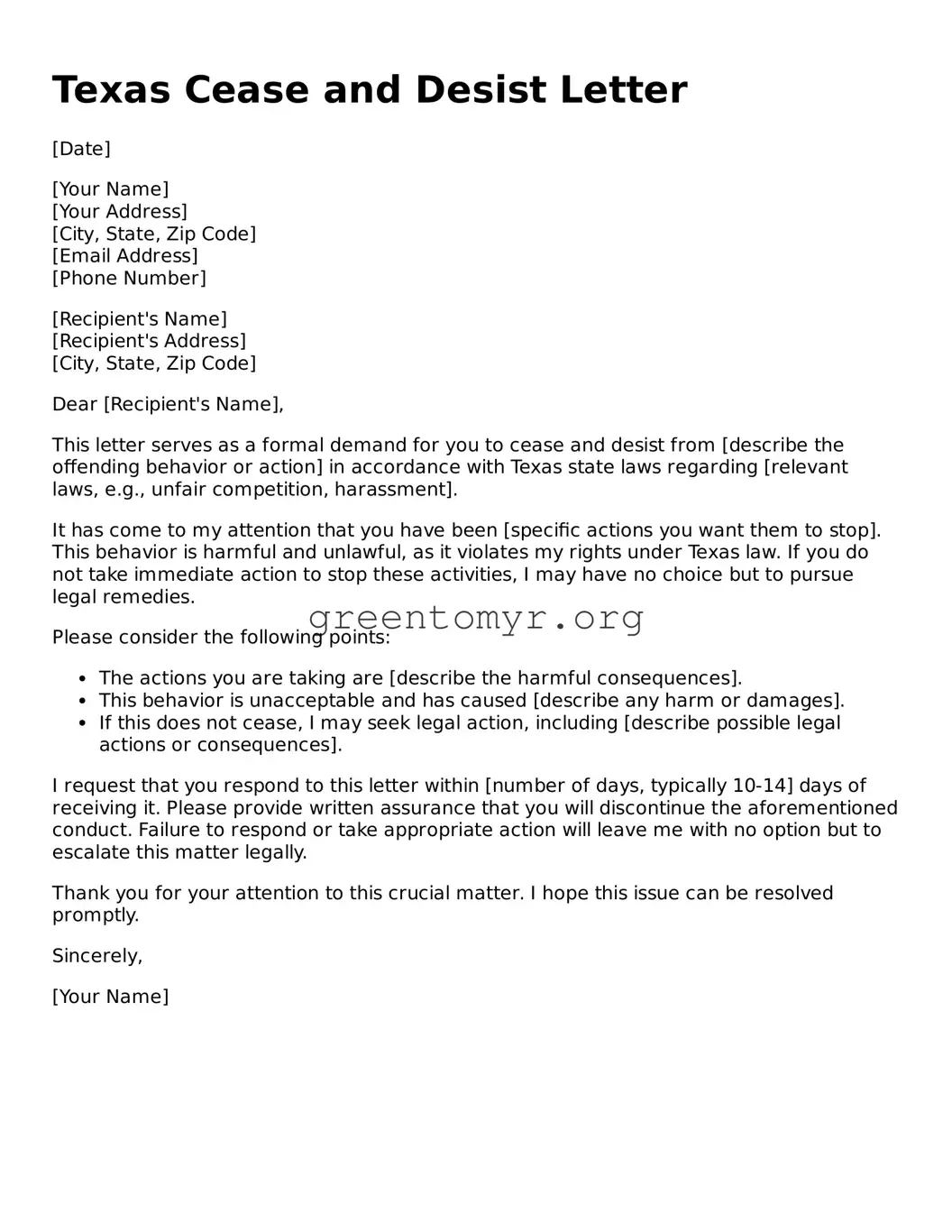Texas Cease and Desist Letter
[Date]
[Your Name]
[Your Address]
[City, State, Zip Code]
[Email Address]
[Phone Number]
[Recipient's Name]
[Recipient's Address]
[City, State, Zip Code]
Dear [Recipient's Name],
This letter serves as a formal demand for you to cease and desist from [describe the offending behavior or action] in accordance with Texas state laws regarding [relevant laws, e.g., unfair competition, harassment].
It has come to my attention that you have been [specific actions you want them to stop]. This behavior is harmful and unlawful, as it violates my rights under Texas law. If you do not take immediate action to stop these activities, I may have no choice but to pursue legal remedies.
Please consider the following points:
- The actions you are taking are [describe the harmful consequences].
- This behavior is unacceptable and has caused [describe any harm or damages].
- If this does not cease, I may seek legal action, including [describe possible legal actions or consequences].
I request that you respond to this letter within [number of days, typically 10-14] days of receiving it. Please provide written assurance that you will discontinue the aforementioned conduct. Failure to respond or take appropriate action will leave me with no option but to escalate this matter legally.
Thank you for your attention to this crucial matter. I hope this issue can be resolved promptly.
Sincerely,
[Your Name]
